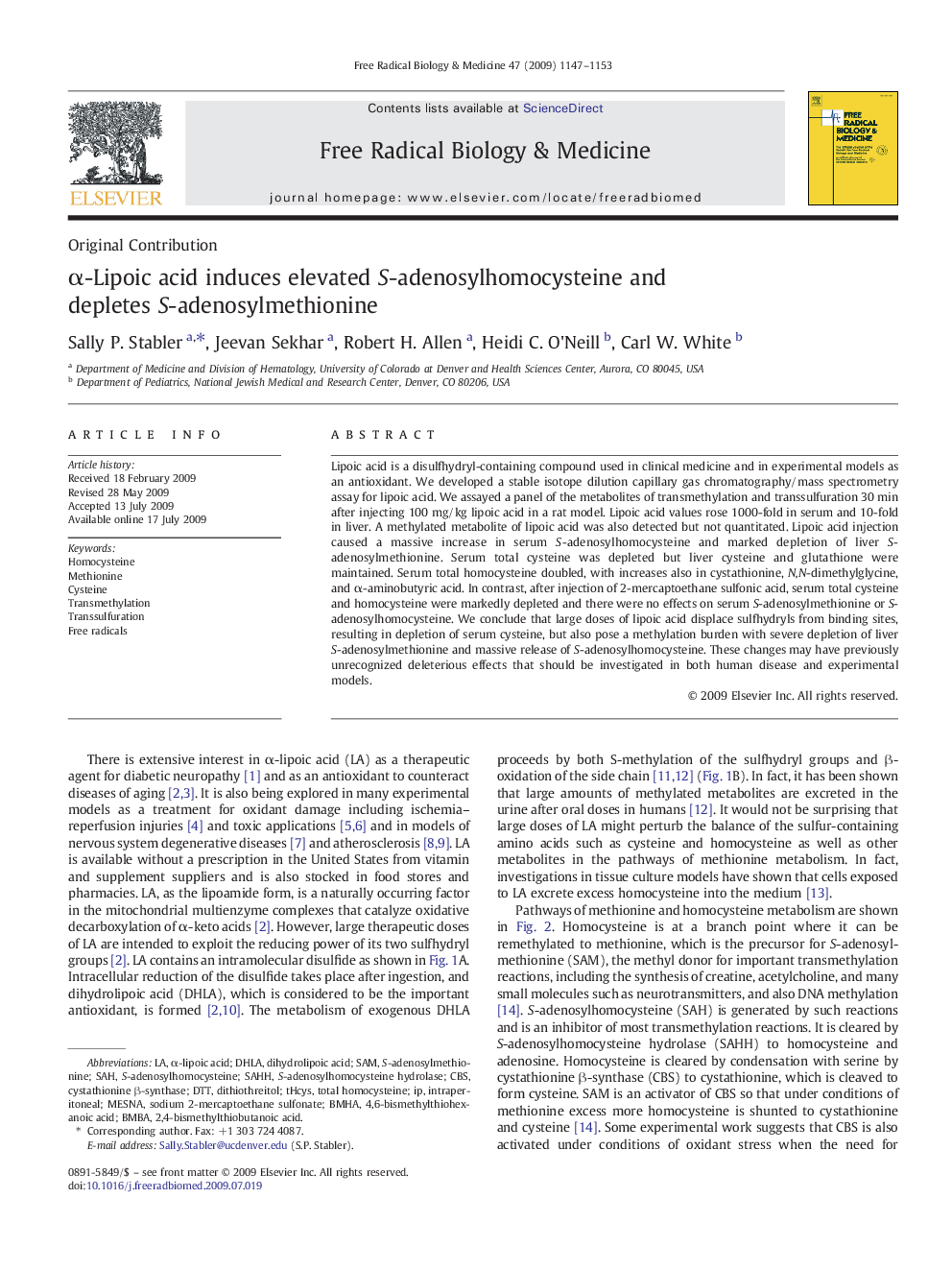| Article ID | Journal | Published Year | Pages | File Type |
|---|---|---|---|---|
| 1910147 | Free Radical Biology and Medicine | 2009 | 7 Pages |
Lipoic acid is a disulfhydryl-containing compound used in clinical medicine and in experimental models as an antioxidant. We developed a stable isotope dilution capillary gas chromatography/mass spectrometry assay for lipoic acid. We assayed a panel of the metabolites of transmethylation and transsulfuration 30 min after injecting 100 mg/kg lipoic acid in a rat model. Lipoic acid values rose 1000-fold in serum and 10-fold in liver. A methylated metabolite of lipoic acid was also detected but not quantitated. Lipoic acid injection caused a massive increase in serum S-adenosylhomocysteine and marked depletion of liver S-adenosylmethionine. Serum total cysteine was depleted but liver cysteine and glutathione were maintained. Serum total homocysteine doubled, with increases also in cystathionine, N,N-dimethylglycine, and α-aminobutyric acid. In contrast, after injection of 2-mercaptoethane sulfonic acid, serum total cysteine and homocysteine were markedly depleted and there were no effects on serum S-adenosylmethionine or S-adenosylhomocysteine. We conclude that large doses of lipoic acid displace sulfhydryls from binding sites, resulting in depletion of serum cysteine, but also pose a methylation burden with severe depletion of liver S-adenosylmethionine and massive release of S-adenosylhomocysteine. These changes may have previously unrecognized deleterious effects that should be investigated in both human disease and experimental models.
